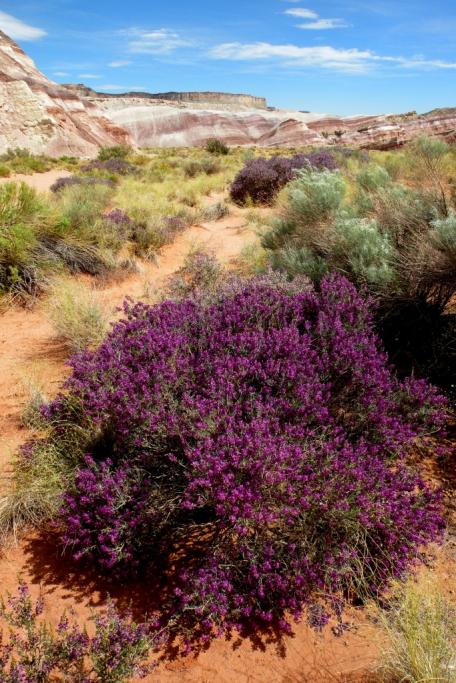
|
Family: Fabaceae |
PLANT : Subshrubs, shrubs, rarely tree-like (in P. spinosus). STEMS : intricately branched, generally with thorns, glabrous to pubescent, dotted with prominent or inconspicuous, domed or prickle-shaped glands. LEAVES : alternate, deciduous, petiolate, simple or odd-pinnate with 2-6(-8) pairs of linear to oblong leaflets, these flat or folded, glabrous to pubescent; pedicels generally with bractlets; stipules small, deciduous. INFLORESCENCE : a congested or open raceme; bracts inconspicuous. FLOWERS : racemose or spicate, the pedicels bibracteolate; calyx tube campanulate, 10-ribbed, bearing 1-5 yellow, orange, or red glands in the rib intervals; petals showy, purple, violet, or blue, inserted on the hypanthium rim; stamens 10, united more than half their length; ovary 2-ovuled. FRUIT : a 1-2 seeded pod, ellipsoid to obovoid, conspicuously red gland-dotted, beaked with a persistent style. NOTES : 9 spp.; Sonoran, Chihuahuan, and Mohave deserts, in US from CA to TX (Greek for scurfy shrub). Barneby, Rupert C. 1977. Mem. New York Bot. Gard. 27:21-54, 598-607. Psorothamnus polydenius should be looked for in the northwestern corner of the Arizona Strip. It can be differentiated from P. fremontii by smaller leaflets (< 4mm long), smaller fruits (2.0-2.5 mm long), and a dense spike-like raceme. REFERENCES : Rhodes, Suzanne, June Beasley and Tina Ayers. 2011. Fabaceae. CANOTIA 7: 1-13. |
This project was made possible in part by the Institute of Museum and Library Services [MG-70-19-0057-19].
Powered by Symbiota



